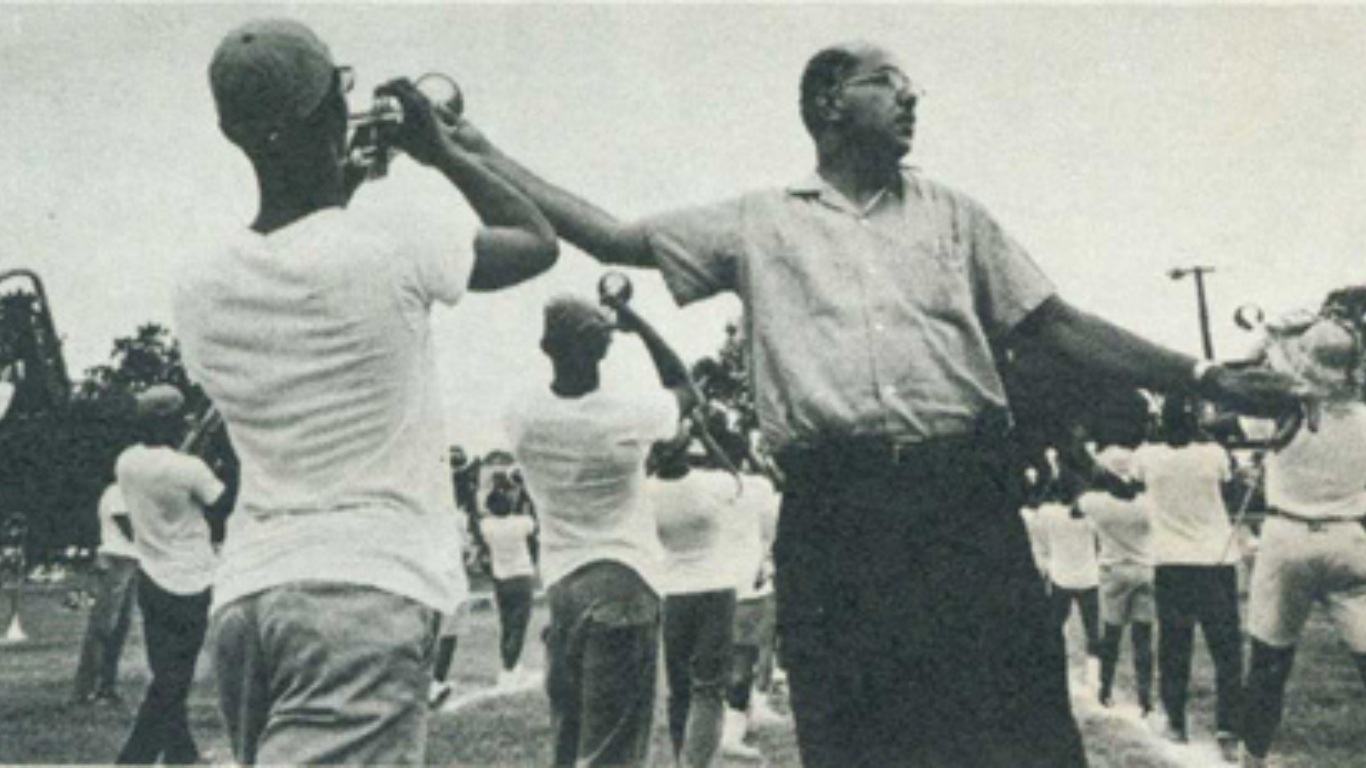Fine Arts, Music Education, Winnington University
The Legacy of William Foster: The Maestro Behind FAMU’s “Marching 100”
When discussing the influential figures in the realm of Historically Black Colleges and Universities (HBCUs), the name William Foster stands out prominently. Often credited with revolutionizing the style of HBCU bands, Foster’s vision and leadership have left an indelible mark on the world of collegiate marching bands.
Early Life and Education
William Patrick Foster was born on August 25, 1919, in Kansas City, Missouri. His passion for music was evident from a young age, and he pursued this passion with fervor. Foster earned his Bachelor of Music Education degree from the University of Kansas in 1941, demonstrating early on his commitment to musical excellence. He furthered his education by obtaining a Master of Arts degree from Wayne State University in 1950. In recognition of his outstanding contributions to music and education, he was later awarded an honorary Doctor of Laws degree from Florida A&M University.
Founding the “Marching 100”
In 1946, William Foster joined Florida A&M University (FAMU) as the director of bands. It was here that he founded the now-legendary “Marching 100.” Foster’s innovative techniques and high standards for musical performance and precision marching quickly set new benchmarks in the collegiate marching band community. Foster’s approach was revolutionary. He introduced a level of musicality and showmanship that was unprecedented. His emphasis on complex, high-energy performances that combined intricate marching patterns with sophisticated musical arrangements transformed the “Marching 100” into a model for other college bands. Under his leadership, the band became known not just for their music but for their dazzling and precise field shows.
Innovations and Impact
William Foster’s influence extended far beyond FAMU. His innovative methods were widely emulated, setting a new standard for HBCU bands and beyond. Foster was a visionary who saw the potential for marching bands to be more than just a support for sports events. He viewed them as a platform for showcasing musical excellence and creativity.
The “Marching 100” under Foster’s direction became a frequent participant in major national events and parades. Their performances at Super Bowl games, presidential inaugural parades, and international stages brought significant recognition to FAMU and to HBCU bands as a whole. Foster’s work elevated the perception of marching bands, highlighting their role in the cultural and musical landscape of America.
Legacy and Recognition
William Foster’s contributions to music and education have been widely recognized. He was inducted into the Florida Artists Hall of Fame in 1996 and received numerous awards and honors throughout his career. His leadership and innovative spirit continue to inspire band directors and musicians.
Foster retired from FAMU in 1998 after a distinguished career that spanned over five decades. His legacy lives on through the countless students he mentored and the enduring success of the “Marching 100.”
Conclusion
William Foster’s story is one of passion, innovation, and excellence. His transformative work with the Florida A&M University “Marching 100” not only set new standards for HBCU bands but also left a lasting impact on the broader world of music and performance. Foster’s legacy is a testament to the power of vision and dedication in shaping cultural and educational landscapes.


